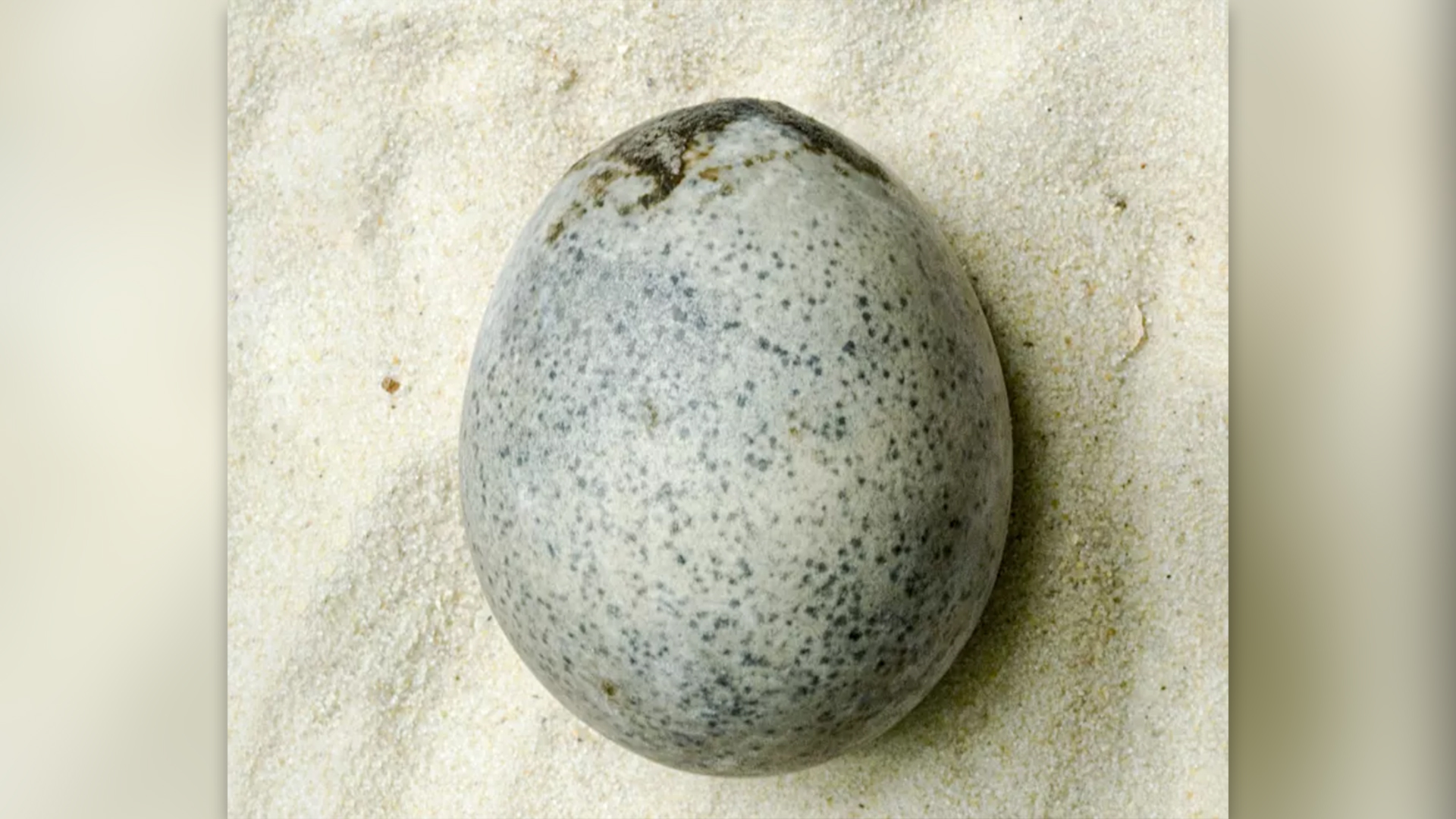Spectacularly preserved Roman-age egg still has its yolk and whites
The egg-citing object may be the oldest unintentionally preserved egg ever found.

A three-dimensional scan of a 1,700-year-old egg discovered at a Roman site in England reveals that, eggs-traordinarily, it still has the remains of a yolk and egg white inside.
It's thought to be the only time a centuries-old chicken egg found with its insides preserved.
"We were absolutely blown away when we saw the contents in there, as we might have expected them to have leached out," Edward Biddulph, a senior project manager at the private company Oxford Archaeology, told BBC News.
Related: 6 incredible egg facts, just in time for Easter
The egg was one of four found several years ago during an archaeological excavation of a Roman-era site in the central English town of Aylesbury, about 20 miles (30 kilometers) east of Oxford. Three of the fragile eggs fractured as they were unearthed, releasing a "potent stench," but the fourth remained intact.
Now, the surviving egg has been scanned at the University of Kent with microscopic computed tomography (micro-CT), in which many X-ray scans are compiled digitally to make a virtual 3D model. "It produced an amazing image that indicated that the egg, apart from being intact — which is incredible enough — also retained its liquid inside, presumably deriving from the yolk, albumen etc," as well as an air bubble, Biddulph said.
Roman eggs
The eggs were found in a waterlogged pit at the Aylesbury site, which was being excavated by Oxford Archaeology ahead of a housing development. The archaeologists found evidence of habitation there dating back to the Neolithic period, and the pit dated from the third century A.D., when England was a part of the Roman Empire.
Get the world’s most fascinating discoveries delivered straight to your inbox.
According to a statement from Oxford Archaeology, the pit was first used for malting grain and brewing ale, but it was later filled with water and became a place where passersby could throw in coins and other items as offerings to the gods for good luck.
Organic objects usually rot away when exposed to oxygen, but here many were preserved by the waterlogged soil. As well as the eggs, which seem to have been an offering of some sort, the pit contained a wooden basket, leather shoes, and wooden vessels and tools.
Although Roman-era eggshells have been found before — often in graves, where eggs were thought to be suitable offerings — this seems to be the first time a complete Roman-era egg has been found in Britain. The only other Roman-era egg to survive intact was found in the hand of a dead infant buried near the Vatican, according to The History Blog. But it contained no liquids; archaeologists think it represented rebirth after the premature death of the baby.
The Oxford Archaeology statement noted that the Romans often ascribed symbolic meanings to eggs; they were associated with the gods Mithras and Mercury and had connotations of fertility and rebirth.
The intact egg from Aylesbury was taken to the Natural History Museum in London, where experts were consulted about how to conserve it without breaking it. Senior bird curator Douglas Russell told BBC News that the museum had a collection of mummified bird eggs excavated from the catacombs of sacred animals in Egypt that might be older.
"However, this is the oldest unintentionally preserved avian egg I have ever seen," he said. "That makes it fascinating."
The egg is now back at a museum in Aylesbury, where archaeologists are trying to work out how to extract the contents without breaking the shell.
Tom Metcalfe is a freelance journalist and regular Live Science contributor who is based in London in the United Kingdom. Tom writes mainly about science, space, archaeology, the Earth and the oceans. He has also written for the BBC, NBC News, National Geographic, Scientific American, Air & Space, and many others.


